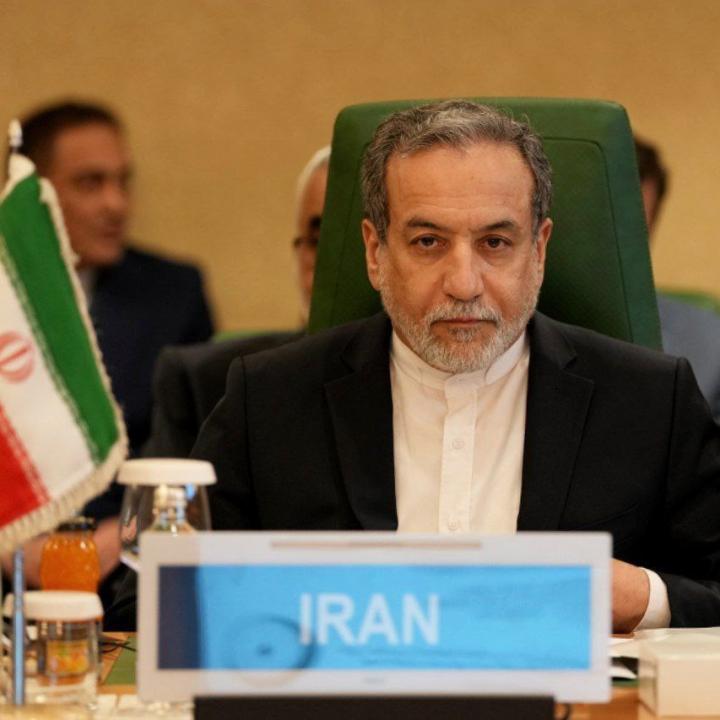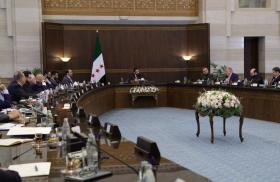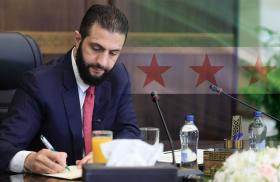
- Policy Analysis
- PolicyWatch 4045
Iran’s Foreign Minister Knows How to Speak Trump’s Language—Literally

In a bid to appease—and manipulate—the pioneer of “Twitter diplomacy,” Iran’s chief nuclear negotiator has adopted President Trump’s social media style while seeking favorable terms for the next big deal.
The recent barb “Failed Biden Team—who failed to reach a deal with Iran” was not fired by President Trump or his allies, but by Iranian Foreign Minister Abbas Araghchi in an April 28 Twitter/X post. Although social media platforms are officially banned inside Iran and only accessible to most citizens through circumvention tools like virtual private networks (VPNs), Araghchi has embraced “Twitter diplomacy” in his role as the country’s lead nuclear negotiator, echoing a strategy pioneered by Trump during the president’s first term.
Fluent in English and holding a PhD from the United Kingdom, Araghchi has an astute grasp of American political rhetoric. By echoing Trump’s communication style, including the occasional use of all caps, he has emerged as a savvy diplomat intent on increasing the chances of reaching a nuclear deal that Tehran wants and needs—a stark contrast to the regime’s combative posture when Trump was last in office.
Iranian diplomats seem to have studied the president’s rhetoric and negotiating style carefully; they are even rumored to have created a psychological profile of him. The Foreign Ministry also reportedly established an informal working group on a potential second Trump term as early as March 2024. More recently, Tehran has no doubt been studying how the administration is handling the Russia-Ukraine talks—learning to push back on U.S. positions while not appearing unreasonable or attacking Trump himself in a way that could cause him to walk away. Unsurprisingly, unauthorized translations of his 1987 best seller Trump: The Art of the Deal are flying off Iran’s bookshelves again.
This tactic is not new for Tehran. It was once led by Mohammad Javad Zarif, the U.S.-educated foreign minister under President Hassan Rouhani who secured the 2015 Joint Comprehensive Plan of Action (JCPOA). Until recently, he served as vice president of strategic affairs under President Masoud Pezeshkian before being pressured out of government by hardliners in March. That baton has passed to Araghchi, a veteran diplomat who was Zarif’s number two during the original talks and has a couple decades of experience on the nuclear file, though the two men have different personal styles when engaging foreign officials. In a May 14 interview, Wendy Sherman, the lead U.S. nuclear negotiator under President Obama, described Araghchi as someone who “knows everything there is to know about this and speaks perfect English.” She added, “Unless you are at the top of your game, he will run circles around you.”
Since the current talks began on April 12, Araghchi has methodically cultivated a narrative designed to catch the ear of Trump and his base. In an April 8 op-ed for the Washington Post, he noted that Trump does not want to “become another U.S. president mired in a catastrophic war in the Middle East”—a point that deeply appeals to Trump’s core voters and isolationist members of his administration, in line with his longstanding platform of avoiding “forever wars” in the region.
Araghchi also attempted to engage the president’s business instincts, describing Iran as a “trillion-dollar opportunity” for the United States. In reality, major barriers to foreign investment would remain even if U.S. sanctions are lifted, including bureaucratic red tape, geopolitical risk, corruption inside the Islamic Republic, and, perhaps most important, Tehran’s failure to comply with the Financial Action Task Force, the chief international watchdog on money laundering and terrorist financing (though Iran did conditionally approve joining the Palermo Convention earlier this month, a significant step toward FATF compliance). In any case, the business theme was echoed in Araghchi’s prepared remarks for the Carnegie Endowment’s International Nuclear Policy Conference on April 22. (Notably, the remarks were published after Carnegie announced that it had canceled his appearance once his team attempted to place undue restrictions on the event.)
Araghchi’s Carnegie speech also argued that “certain Special Interest groups”—presumably neoconservative Republicans and think tanks who oppose a nuclear agreement—were trying to make “the fake claim that a potential deal will be another JCPOA.” He insisted that Tehran no longer wants the same deal because the JCPOA’s terms are “no longer good enough,” and he pointed to Trump’s 2018 withdrawal as proof that the president “does not want another JCPOA either.” Araghchi has mentioned these “Special Interest groups” before, accusing them of “smearing negotiators and goading the U.S. administration into making maximalist demands.”
At other times, Araghchi has attempted to shield Trump from blame for diplomatic controversies, in stark contrast to how Zarif handled the first Trump administration. On May 7, the Associated Press reported that Trump planned to announce the renaming of the Persian Gulf to the “Arabian Gulf” or “Gulf of Arabia” during his latest trip to the region. Rather than attribute this idea to Trump—as Zarif once did when it was first floated in 2017—Araghchi claimed that it was “no more than a disinformation campaign by ‘forever warriors’ to anger Iranians all over the world and agitate them.” He then said he was “confident” that Trump was “aware” of the waterway’s historical name, making sure to tag the president directly to drive the point home. (Trump appears to have changed his mind, for now.)
Araghchi has also tried to drive a wedge between Tehran’s archenemy, Israel, and Trump on numerous occasions. On May 5, he accused Prime Minister Binyamin Netanyahu of “attempting to brazenly DICTATE what President Trump can and cannot do in his diplomacy with Iran,” referring to Netanyahu’s history of pushing for military action against the nuclear program. He added, “Netanyahu CONNED the Failed Biden Team into handing over UNPRECEDENTED 23 BILLION American Taxpayer Dollars,” a reference to U.S. military support for Israel during the Gaza war. In a previous post, Araghchi stated that Netanyahu and his former allies in the Biden administration were “FALSELY casting our indirect negotiations with the Trump administration as another JCPOA”—a calculated move given Trump’s known distaste for being associated with any deal negotiated by a Democrat. Similarly, Araghchi tagged Trump in a post accusing Netanyahu of having a “Determining What @realdonaldtrump Can & Cannot Do” policy.
This Iranian messaging strategy is not limited to social media posts. At least one Persian-language television outlet has openly called for a visit by American commentator Tucker Carlson, referring back to his glowing tour of a Russian grocery store in the middle of the Ukraine war. Presumably, the idea would be to capture Trump’s attention and influence his thinking—while conveniently papering over the repression and economic plight of Iranians struggling just to make ends meet.
Taken together, Araghchi’s strategic messaging forays underscore his effort to navigate both the delicate nuclear talks and the tense American political environment. He appears determined to strike just the right tone: assertive enough to project Iranian strength in the face of what Tehran views as U.S. imperialism, but deferential enough to avoid offending an unpredictable U.S. president who controls the valves of “maximum pressure.” In leveraging Trump’s lexicon, Araghchi is not just speaking to the president and his base, but skillfully attempting to reset the chessboard on Iran’s terms.
Holly Dagres is the Libitzky Family Senior Fellow at The Washington Institute and curator of The Iranist newsletter.



